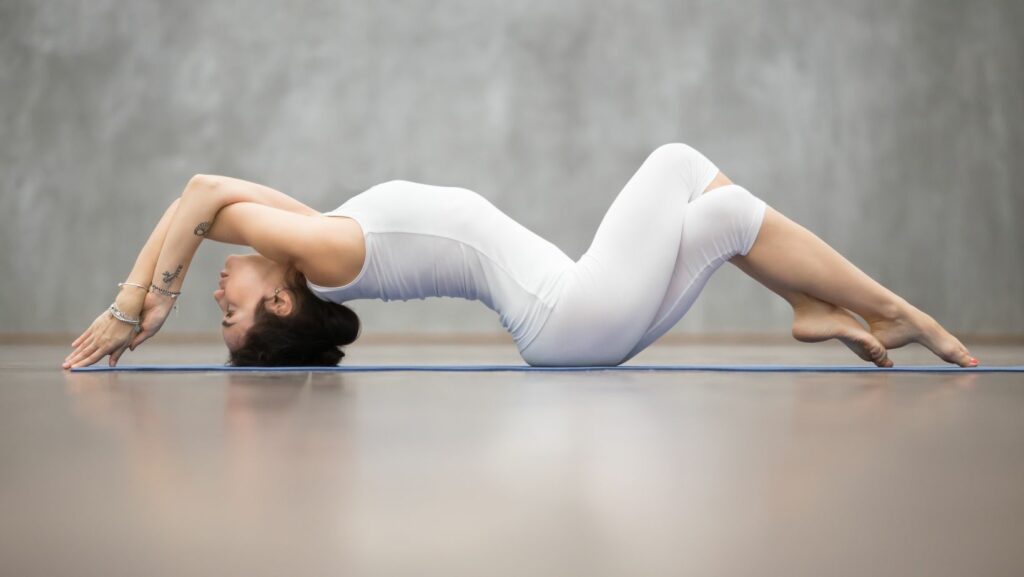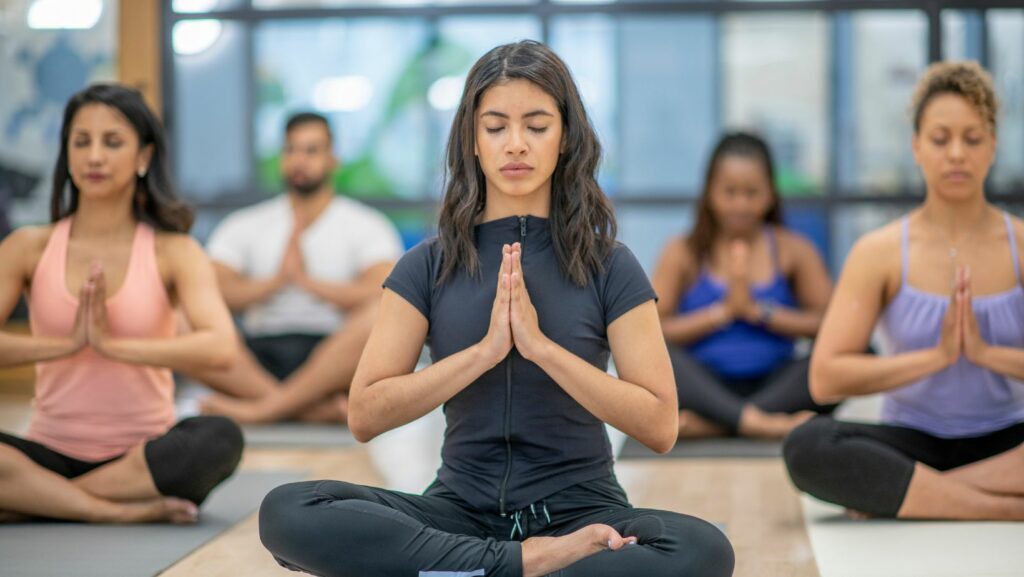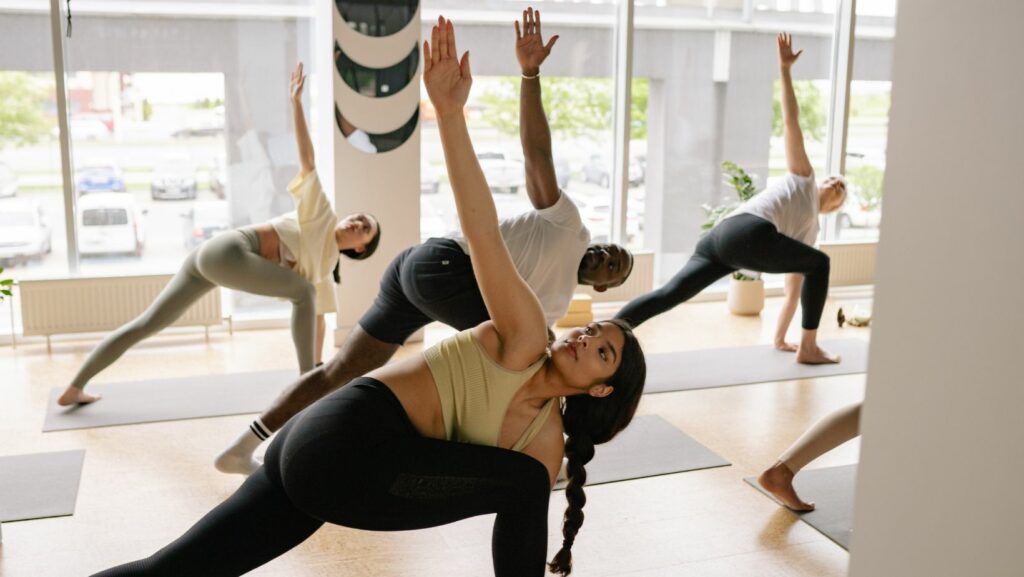In the world of yoga, the Fish Pose isn’t just a quirky name; it’s a gateway to tranquility and flexibility. Picture this: you’re lying on your back, chest lifted, and feeling as graceful as a dolphin. This pose not only opens up the heart but also gives your spine a delightful stretch. Who knew that channeling your inner fish could feel so good?
Table of Contents
ToggleFish Yoga Pose
Fish Pose offers multiple physical and mental benefits, promoting tranquility and enhancing flexibility. Engaging in this pose can significantly improve overall well-being.
Benefits Of Fish Yoga Pose
 Fish Pose stretches the spine and opens the chest, providing relief to tension in those areas. Improved circulation occurs as the pose helps rejuvenate the body by promoting blood flow. The heart opens, inviting emotional release, while deep breathing encourages relaxation. This position strengthens the back and neck, making it valuable for maintaining posture. They also find the pose invigorating, often boosting energy levels. Enhanced flexibility in the hips and shoulders further enhances the practice’s effectiveness, fostering a sense of balance and peace.
Fish Pose stretches the spine and opens the chest, providing relief to tension in those areas. Improved circulation occurs as the pose helps rejuvenate the body by promoting blood flow. The heart opens, inviting emotional release, while deep breathing encourages relaxation. This position strengthens the back and neck, making it valuable for maintaining posture. They also find the pose invigorating, often boosting energy levels. Enhanced flexibility in the hips and shoulders further enhances the practice’s effectiveness, fostering a sense of balance and peace.
Common Mistakes
Avoid tensing the shoulders when practicing Fish Pose, which can weaken its benefits. Many practitioners let the head drop too far back, risking neck strain. Engaging the abdominal muscles helps maintain integrity throughout the pose. It’s important to keep the feet planted on the mat rather than allowing them to splay out. Failing to breathe deeply can limit the relaxation benefits, diminishing the pose’s effectiveness. Practitioners often overlook the alignment of the spine, which should remain straight. Recognizing these common mistakes enhances the practice of Fish Pose, leading to a more rewarding experience.
How To Practice Fish Yoga Pose
Practicing the Fish Pose requires careful attention to detail and a focus on proper technique. Following these steps ensures a rewarding experience.
Step-By-Step Instructions
-
- Begin by lying on your back, legs extended and feet together.
-
- Place your hands under your hips, palms down for support.
-
- Inhale deeply while pressing your forearms and elbows into the mat.
-
- Lift your chest and arch your back gently, supporting your weight with your arms.
-
- Allow your head to drop back slightly, maintaining a relaxed neck.
-
- Keep your gaze upward or close your eyes for deeper relaxation.
-
- Hold the pose for 15 to 30 seconds while breathing steadily.
-
- Release the pose by lowering your chest and head, returning to a flat position.
Tips For Beginners
Starting off can feel challenging. Focus on aligning your body correctly to prevent strain.
Engaging your core helps maintain stability throughout the pose. Remember to breathe deeply; inhaling and exhaling encourages relaxation.
Consider using a yoga block for support beneath your back, easing tension. Taking it slow allows for gradual discovery of comfort and flexibility.
Listening to your body promotes awareness, ensuring adjustments as necessary. Patience plays a key role in mastering the Fish Pose, so enjoy the journey.
Variations Of Fish Yoga Pose
Multiple variations of the Fish Pose exist to cater to different skill levels and intentions. Practitioners can explore options that enhance comfort and deepen the stretch.
-
- Supported Fish Pose
This variation involves placing a yoga block or folded blanket under the upper back. Doing so provides additional support, allowing for greater relaxation and an extended stretch in the chest and throat.
-
- Reclined Fish Pose
In this version, practitioners extend the legs straight and relax the feet. The spine stays supported as the focus shifts to opening the heart and neck, promoting a sense of peace.
-
- Bound Fish Pose
This variation sees the hands clasping the feet while lying back. Engaging the legs encourages a deeper stretch and opens the shoulders more extensively, adding intensity to the practice.
-
- Fish Pose With Legs Bent
Knees bent and feet flat on the floor form this alternative. It allows for greater stability and comfort, making this option ideal for beginners or those with tight hips.
-
- Fish Pose Against the Wall
This practice includes lying on the back with the shoulders against a wall and legs extended upwards. The position provides a unique stretch and promotes relaxation along the spine.
Practitioners can experiment with these variations to determine which feels most beneficial. Adjusting alignment helps maintain comfort and encourages deeper breathing. Utilizing props and exploring different leg positions enhances the experience, leading to a more rewarding practice.
Contraindications And Precautions
Practitioners should exercise caution when performing the Fish Pose. Individuals with neck injuries or conditions like cervical spondylosis must avoid this pose to prevent aggravation. Those experiencing severe back pain might find the lift of the chest uncomfortable, therefore modification or avoidance of the pose is advisable.
Pregnant women need to consult a healthcare professional before attempting the Fish Pose. This position can put pressure on the abdomen, which may not be safe in later stages of pregnancy. Children or beginners should practice under supervision, ensuring proper alignment and safety.
Certain medical conditions warrant additional care. If someone suffers from migraines or serious headaches, it’s wise to skip this pose, as it may worsen symptoms. Caution becomes essential for anyone recovering from surgery, particularly around the neck or spine. Always seek professional guidance in these cases.
Proper warm-ups enhance safety. Engaging in gentle stretches prior to attempting the Fish Pose prepares the body and minimizes risk. Practitioners should listen to their bodies, refraining from pushing limits if they experience discomfort.
Adapting the pose helps various skill levels. Utilizing props, like yoga blocks, offers additional support and encourages a safer experience. Monitoring breathing patterns also aids in maintaining awareness and control throughout the practice. Each minor adjustment contributes to a more enjoyable and fulfilling yoga session while emphasizing safety.
Deeper Connection
Practicing the Fish Pose can be a transformative addition to any yoga routine. Its ability to open the heart and stretch the spine fosters both physical and emotional well-being. By focusing on proper alignment and breathing techniques practitioners can unlock the pose’s full potential.
Exploring variations allows individuals to tailor their experience based on comfort and skill level. This adaptability encourages everyone to embrace the pose in a way that feels right for them.
Whether seeking relaxation or enhanced flexibility the Fish Pose offers a unique opportunity for self-discovery and rejuvenation. With patience and mindful practice it can lead to greater balance and a deeper connection to one’s body.



